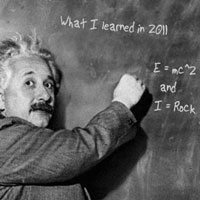
1. Sometimes we do More Harm than Good When Training the Core
I’ve actually know this for some time, it really isn’t something that I learned in 2011. However, what I did learn this year was that the internet can be very, very powerful. It is a great resource to share information. Unfortunately it is also an easy way to share misinformation. I spend a lot of time on the internet trying to learn and expand my practice. I emphasize professional development probably more than any other characteristic. I may not be the smartest guy around, but it isn’t from lack of effort.
When I was putting together my presentations for my talks at the Functional Stability Training of the Core seminar that I conducted with Eric Cressey, I dedicated a portion of my presentation on some of the mistakes we make in core training. One of the first things I do when treating someone with low back pain is STOP emphasizing lumbar mobility. I’m amazed at how often this really helps facilitate improvement. Don’t get me wrong, there are times I still need to mobilize and manipulate, however more often than not, I feel like low back pain is from poor movement and stability of the lumbar spine and lack of mobility elsewhere, such as the thoracic spine and hips. Yet what does everyone want to do? Stretch and force themselves into lumbar rotation.
This really is what made me want to create the Functional Stability Training of the Core program. Eric and I are almost done finalizing the videos from the seminar and hope to have it available online sometime in early 2012. Check out FunctionalStability.com for more information.
2. The True Function of the Brain is to Produce Movement
This is something I actually came across this month. If you keep tabs on my forum (and why wouldn’t you???), you saw my post on the function of the brain and it’s influence of movement. If you are reading this article than I assume you are of the same thought process I am in that movement quality is probably the most important area we should be focusing on in rehabilitation, injury prevention, and performance enhancement.
So, when I saw a recent TED talk on the function of the brain by author Daniel Wolpert, I really took a step back. His presentation completely revolved around the concept that the true function, and really the only function, of the brain was to produce movement. Our brain basically perceives stimulus from the outside world and takes it in to produce movement. Not rocket science, we define neuromuscular control as the efferent response to afferent input already, right? Well he brought up a ton of great thoughts to strengthen this concept. Two that I really liked:
- The sea squirt, of of the most simplistic animals, swims around early in life to only one day plant itself on a rock. This is just what they do. Once they do this, and stop moving, the first thing they do is digest their own brain and nervous system for food. Once they stop moving, they can still live without it!
- We can easily write a computer program that will beat any human in chess. We can simulate the thought process. Yet, we still can not build a robot to replicate physically moving the chess pieces! We can not program fluid mobility because our movement patterns are based on feedback patterns from our senses. He shows some great videos to demonstrate this. If we are moving a bottle of water, we make small adjustments to assure we don’t spill it. A program can’t do this.
I also talked about his concept of “noise” and how this can influence the rehabilitation and performance training realms. You really need to check out this video and discuss this amazing concept that movement is the real reason we have brain.
3. We Are Really Abusing the Sleeper Stretch
The sleeper stretch sure is popular right now. Everywhere you turn you see people either performing it or recommending it. I wrote a three article series this summer on why I don’t use the sleeper stretch, how to perform the sleeper stretch if you really want to, and alternatives to the sleeper stretch. Check out these articles if you haven’t yet as they may change your mind about the sleeper stretch. There is a time and place for everything, including the sleeper stretch, I just think we are going through a phase right now where it is VERY popular and that often leads to overdoing it and abusing it.
4. We Can Get Inspiration from Unlikely Sources
This year I published two unusual articles for this website about what we can learn from a barbershop and what we can learn from Steve Jobs. These are both unusual sources of inspiration for us in the rehab and fitness industries, but illustrates that inspiration can come from many sources. In both articles, I discussed what ultimately came down to providing a superior product to your customer, wether that be a patient, client, or athlete. Not sure why these thoughts came to me. For the barbershop I was just getting a haircut and my mind wandered. For the Steve Jobs articles, I literally wrote that at 2:00 in the morning the night he resigned from Apple, marking what we all knew was coming.
Where do you get your inspiration from?




